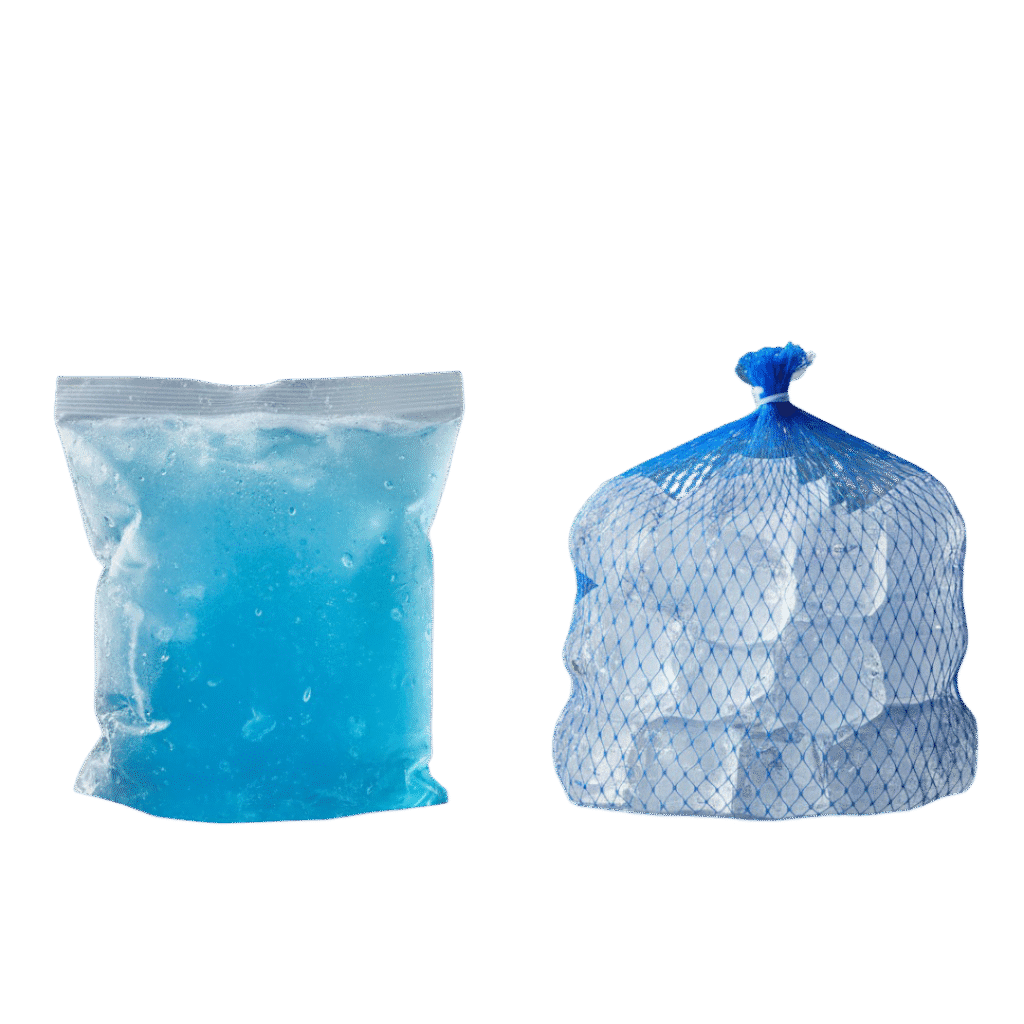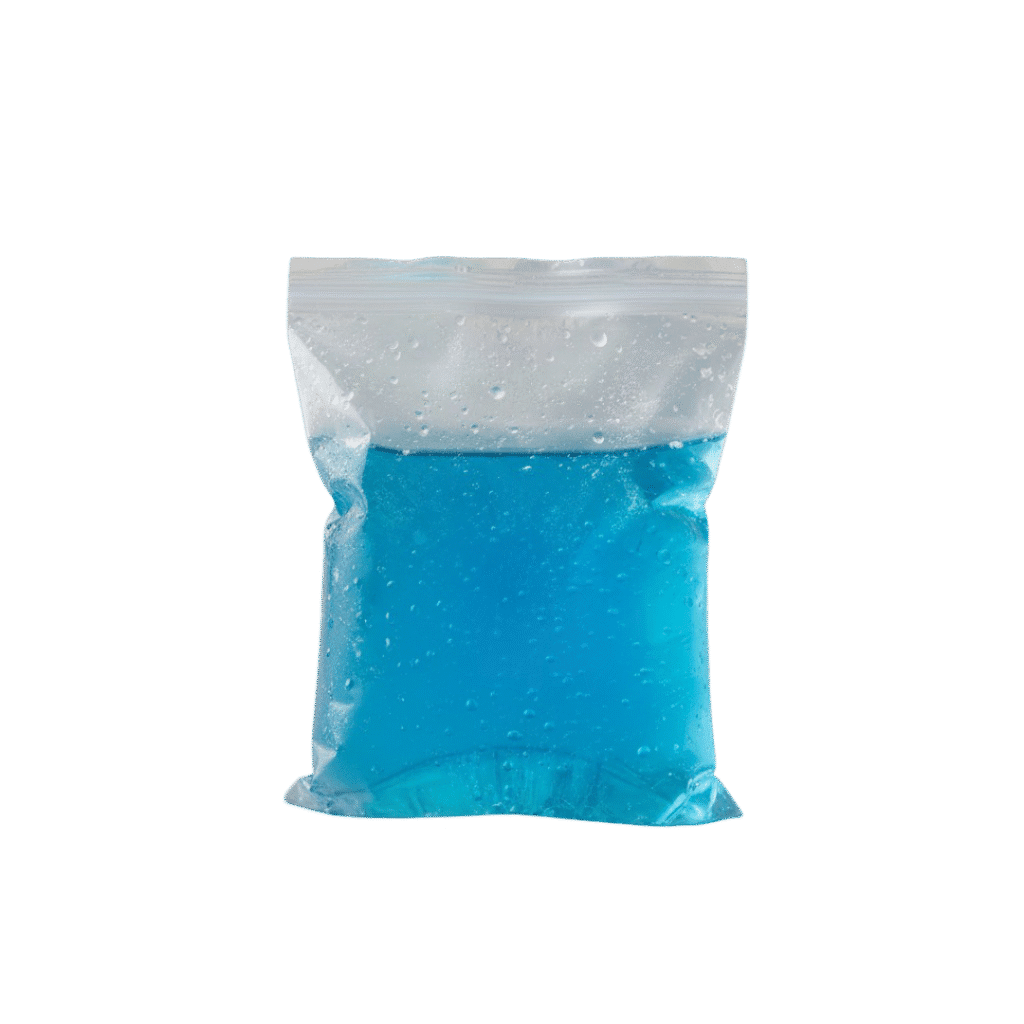When it comes to keeping items cold, whether for outdoor adventures, food transport, or medical use, choosing between gel ice packs and regular ice can make all the difference. Both have their advantages, but one offers superior performance in specific situations. In this guide, we’ll break down the differences, advantages, and ideal uses for each, helping you make an informed choice for your cooling and storage needs.

Understanding Regular Ice
Regular ice, or frozen water, has been the go-to cooling method for decades. Whether crushed or cubed, it provides immediate cold when placed in coolers or storage boxes. However, ice has its downsides, such as melting quickly and creating water messes.
Key Features
- Natural and easily accessible cooling method.
- Instant chilling effect for food and beverages.
- Budget-friendly and available everywhere.
- Melts over time, leading to potential leaks and soggy items.

Understanding Gel Ice Packs
Gel ice packs are reusable cooling solutions filled with a gel-based substance that can freeze to sub-zero temperatures. They are sealed in durable plastic pouches and come in various shapes and sizes, ideal for different cooling purposes.
Composition and Function
The gel inside is usually made from water, polymer, and sodium polyacrylate, substances that enhance freezing capacity and prolong cold retention. Once frozen, the gel remains flexible, allowing it to wrap around objects and maintain consistent contact — a feature that traditional ice lacks.
Key Features
- Reusable and durable for multiple freeze–thaw cycles.
- Non-toxic and leak-resistant when properly sealed.
- Flexible even when frozen, ensuring full coverage.
- Less mess – no melting water to clean up.

Cooling Performance: Gel Ice Packs vs. Regular Ice
When it comes to cooling efficiency, gel packs clearly outperform regular ice in several aspects.
- Temperature Retention
Gel ice packs stay cold longer than regular ice due to their specialized chemical composition. While ice melts at 0°C (32°F), gel packs can maintain sub-zero temperatures for extended periods without turning into liquid.
Verdict: Gel packs provide longer-lasting cold, ideal for extended trips or deliveries.
- Consistency of Cooling
Because gel packs remain semi-flexible even when frozen, they maintain better surface contact with stored items. Regular ice cubes, in contrast, leave air gaps that reduce overall cooling efficiency.
Verdict: Gel ice packs deliver more consistent cooling performance.
- Melting and Cleanliness
One of the biggest drawbacks of regular ice is the meltwater problem. Melted ice can soak food, damage packaging, or leak from containers. Gel packs, on the other hand, do not melt into water; they simply thaw internally while staying contained.
Verdict: Gel packs are cleaner and more convenient for storage and transport.
Storage Efficiency and Reusability
Gel Ice Packs
These packs are designed for long-term use. You can refreeze them hundreds of times without degradation. Their leak-proof construction makes them perfect for medical applications, meal deliveries, or travel coolers.
Regular Ice
While inexpensive and effective for one-time use, regular ice lacks reusability. Each use requires a new batch, which adds up over time. Additionally, ice can absorb odors from the freezer, which can impact the freshness.
Verdict: Gel packs are more sustainable and cost-efficient in the long run.
Best Use Cases
When to Use Gel Ice Packs
- Medical and first aid – Ideal for injuries, swelling, or post-surgery cooling.
- Food delivery and storage – Keeps perishable items fresh without risk of contamination.
- Camping and travel – Compact, clean, and reusable cooling source.
- Shipping temperature-sensitive items – Maintains stable cold conditions.
When to Use Regular Ice
- Outdoor parties and picnics – Perfect for chilling drinks instantly.
- Short-term cooling – Ideal when you only need cold for a few hours.
- Backup cooling – Useful when a freezer isn’t available to refreeze gel packs.
Environmental Impact
Gel ice packs are designed with sustainability in mind. Since they can be reused hundreds of times, they significantly reduce plastic waste compared to single-use ice bags. Most are made from non-toxic gels, making them safe for both home and commercial use.
In contrast, regular ice wastes water and energy with each use, especially in high-demand environments like restaurants or catering services.
Verdict: Gel packs are the eco-friendly choice for repeated use.
Cost Comparison
While regular ice is cheaper initially, gel ice packs prove more economical over time. A one-time investment in quality gel packs eliminates the need to continuously buy or make ice. This makes them the preferred choice for businesses and frequent travelers who rely on consistent cooling.
Verdict: Gel ice packs offer better long-term value.
Safety and Maintenance
Gel Ice Packs
To ensure safety, always choose gel packs labeled non-toxic. Even if the pack leaks, these gels are generally harmless but should not be ingested. Simply wipe the surface and refreeze after use. Proper storage away from direct heat extends their lifespan.
Regular Ice
While completely safe and natural, ice requires sanitary handling to prevent contamination, especially when used for food or medical purposes.
Verdict: Both are safe, but gel packs are easier to maintain.
Final Verdict: Which Is Better?
Both gel ice packs and regular ice serve valuable roles in cooling and storage. However, for long-lasting cold, clean handling, and reusability, gel packs clearly come out on top. They’re ideal for anyone needing consistent cooling performance — from healthcare providers to outdoor enthusiasts.
If you only need short-term chilling for a picnic or party, regular ice remains a convenient option. But for sustainable, efficient, and mess-free cooling, gel ice packs are the superior choice.
Conclusion
In the debate of Gel Ice Packs vs. Regular Ice, it’s clear that gel packs offer a modern, efficient, and eco-friendly alternative. Their ability to stay cold longer, avoid mess, and reduce waste makes them the smart investment for the future of portable cooling. Whether for medical, food, or recreational use, gel ice packs deliver reliability and performance that traditional ice simply can’t match.